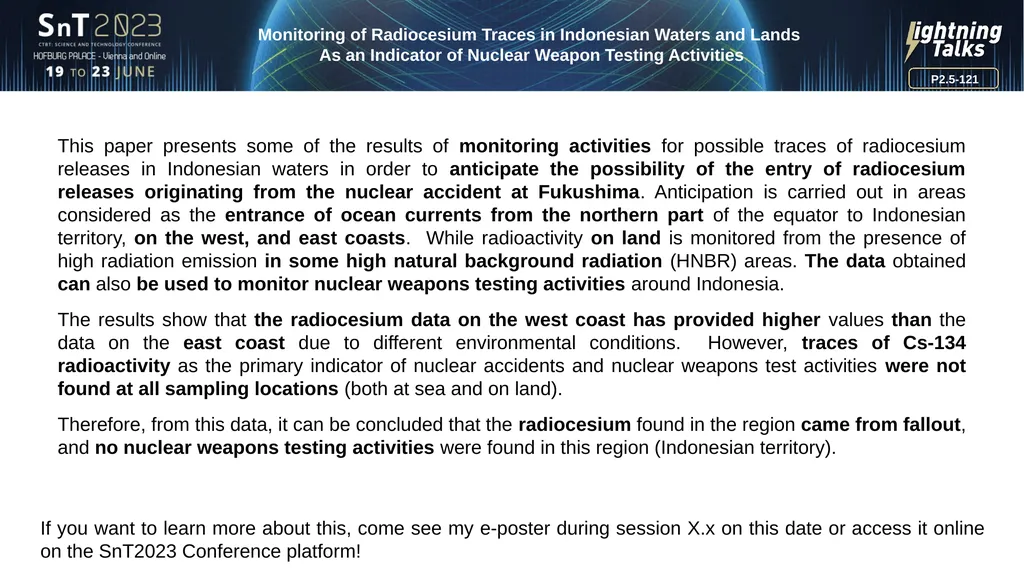
P2.5-121 Monitoring of Radiocesium Traces in
Author: tawny-fly | Published: 2025-08-08
Description: P2.5-121 Monitoring of Radiocesium Traces in Indonesian Waters and Lands As an Indicator of Nuclear Weapon Testing Activities This paper presents some of the results of monitoring activities for possible traces of radiocesium releases in
Download Presentation
Download the PPT/PDF: Download
Transcript:
Loading transcript…